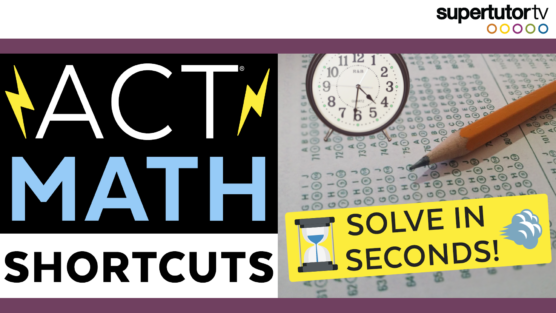If you’re looking for ways to speed up your mental math processing speed and new ways of calculating problems you’re tired of doing the long way, look no further!
Below find three mental math hacks to boost your mental math capabilities!
1. PARTIAL PRODUCT MULTIPLICATION
Many teachers in elementary schools are already shifting their teaching to partial product methods as part of the Common Core. This method also works if you’re looking for ways to process problems without pencil and paper.
The core idea is to split up your problem into the ten’s and one’s place, essentially running the distributive property.
Let’s look at an example:
17×24= ?
Separate the 10’s and One’s places in your mind– as you can see we’re going to tease out the tens and ones place and then use the distributive property.
(10+7)×24= ?
To solve, we’ll create two problems — ten times 24 and 7 times 24:
(10×24) + (7×24)= ?
First do 10×24 in your head =240
Then do 7×24 — now again we’ll apply the same split as above: separate the 10’s and one’s places of 24 in your mind, then distribute and create two problems:
(7)×(20+4)=?
(7×20) + (7×4)=?
Now run each problem in your head:
(7)×20=140
(7)×4=28
Now add everything in your head:
140+28=168
240+168=408
2. ROUND THEN COMPENSATE
For this method, round your multiplication or addition problem to an easier problem, and then calculate how much you need to compensate to get the exact answer.
Let’s look at an example:
11×597= ?
597 is really close to 600– a number that would make an easy problem:
11×600=6600
Now we need to compensate – we over counted by three times 11 – or 33.
If that’s confusing– again tease out the 3 and think about the distributive property (much like you did in partial product multiplication above)
11×(600-3)=?
(11×600) – (11×3)=?
Subtract 33 from the easy answer:
6600-33=6567
Here’s another example:
497+699= ?
497 is really close to 500 (round up 3)
and 699 to 700 (round up 1)
So far we’ve rounded up by 4 (adding in four too many)– we’ll need to subtract that amount at the end.
500+700= ?
500+700=1200
Now we need to compensate – subtract out the 4
1200-4=1196
3. THE ONE PERCENT & TEN PERCENT METHODS
This is a trick to quickly calculate percents in your head. Finding three percent may sound confusing, but finding 1% or 10% is pretty fast and easy.
Let’s look at an example:
Let’s say you want to tip between 15-20% at a restaurant.
BILL AMOUNT: $42.73
Calculating 15% the traditional way could be a lot of work. Instead, we can use the 10% method. First find 10%:
10% = $4.27
To get 20%, double that
$4.27 × 2 = $8.54
OR to get 15% add half of 10% amount
$4.27+2.14=$6.41
Tip between the two and you’re done!
Let’s look at another scenario. You know how some mom and pop stores charge an extra 3% on credit card purchases? Here’s a quick way to figure out how much that exactly is using the 1% method.
Let’s say you want to calculate a 3% surcharge on a credit card purchase of $425.
First find 1%:
BILL: $425.00
1% = $4.25
To get 3%, triple that
= $12.75
Voila! I use the ten and one percent methods often on the go– when shopping, eating, or anytime I need to figure out a percent.
Hope you liked this post! To get more of our latest tips sign up for our mailing list.



